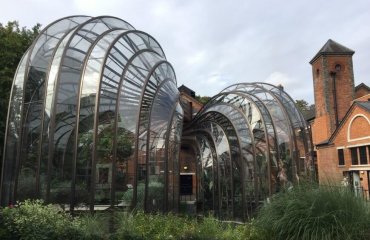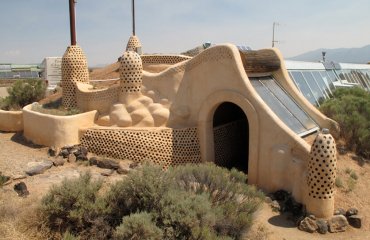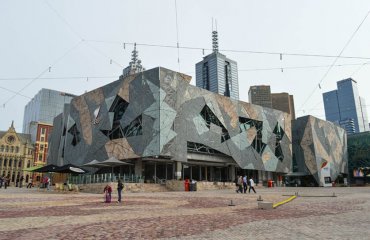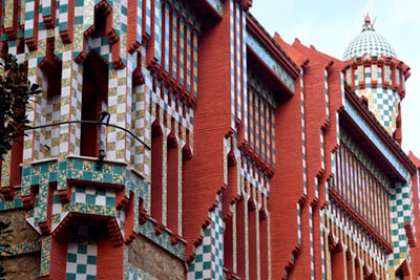
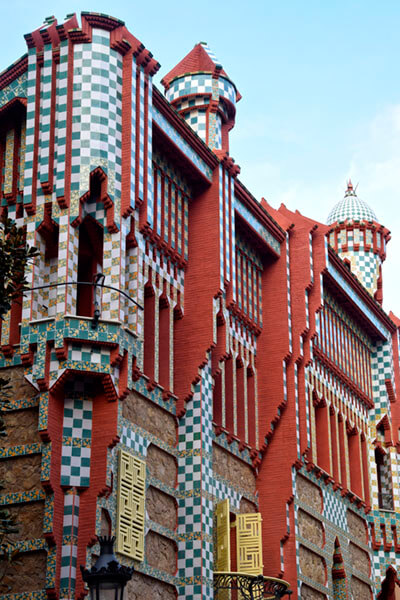
BCNCVC032 by Jon Ander is used under public domain
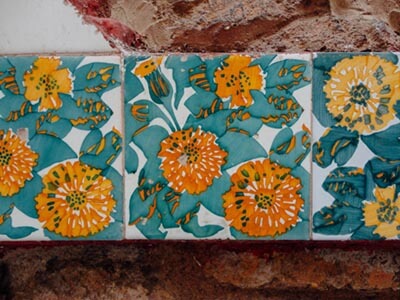
Casa Vicens by –v is licensed under CC BY 2.0
The overwhelmingly elaborate Casa Vicens is something only an architect as skilled as Antoni Gaudí could hope to realize. This home in Barcelona, Spain was the world-famous architect’s first significant commission as a young man.
In 1883 Manel Vicens i Montaner, a stock and currency broker commissioned Gaudí, 31 years old at the time, to design his summer home.
In this design, Gaudí blends nature with the architecture. This can be seen throughout the home in elements such as the cast-iron palmetto leaves on the front gate, French marigolds and dianthus on the exterior ceramic tiles, trompe l’oeil flora, and fauna on some ceilings, and textured papier-mache tiles that create faux foliage on ceilings and walls. These concepts would be repeated throughout his later projects and form the style he is famous for today.
Not long after its completion, Montaner sold the home and it was remodeled to become a three-family dwelling. Additional modifications were made over the years.
In 2005 Casa Vicens was declared Unesco World Heritage. In 2017 it was restored and reopened to the public as a museum. The restoration was difficult due to the modifications over prior years. But the restoration team was steadfast in their efforts; referring to old photographs and historical records to remain true to Gaudí’s original version. Ceramic tiles made in the traditional fashion were even used to restore the roof.
The spaces Gaudí did not design himself were utilized to add new facilities necessary for the museum. Not only the building but also the garden was painstakingly restored to the closest approximation of its original version.
This museum is a must-see destination for all to appreciate the unique expression that Gaudí offered to the world.
To see more of Gaudí’s unusual and fascinating work see my posts on Casa Batlló, Casa Milá, El Capricho, and Sagrada Família.

